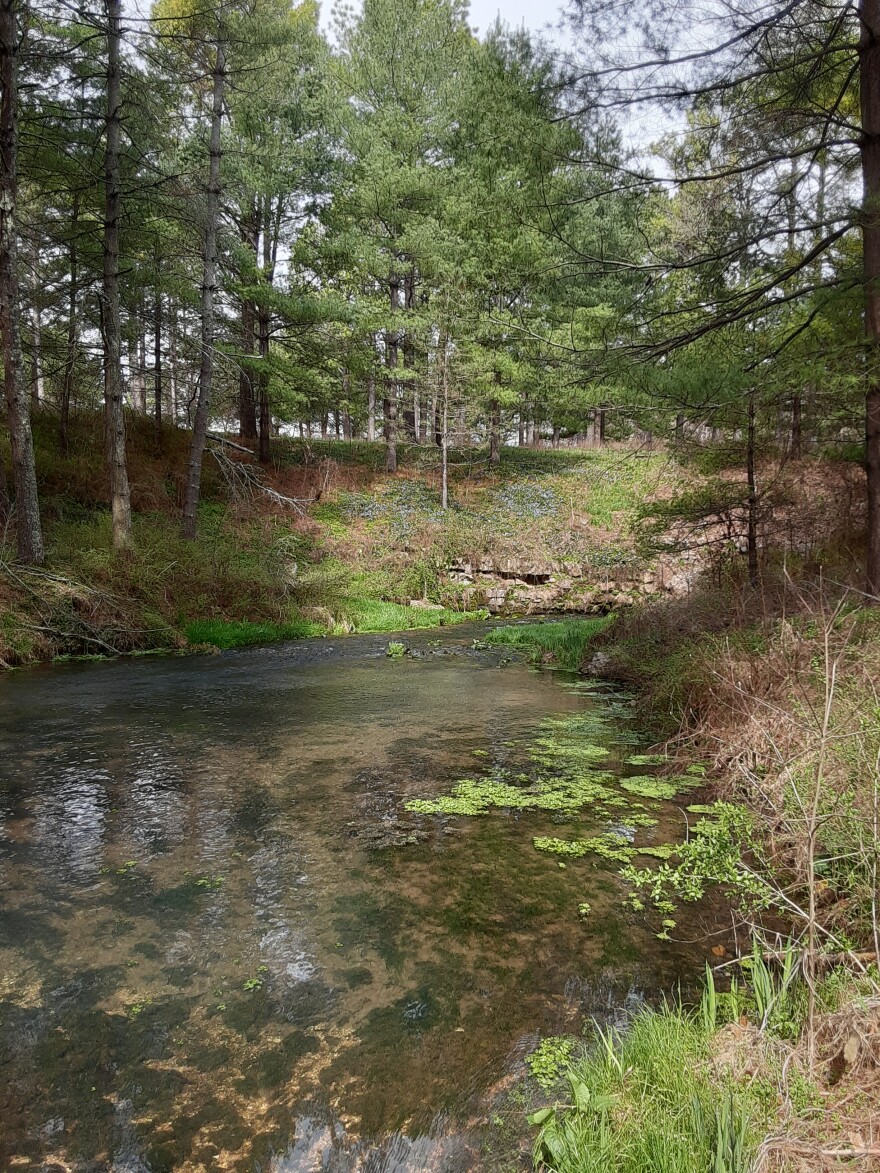One man’s passion for trees more than 50 years ago led to the creation of a nonprofit organization based in Strafford. The Lovett Pinetum works to develop and manage a collection of several hundred species of conifers.
The pinetum encompasses a 108 acre site just east of Springfield and a 43-acre site in Texas. In all, there are more than 500 species, varieties and cultivars of conifers on those acres.
It all began in 1970 when Springfield pathologist, Dr. Bob Lovett, purchased 14 acres of land with a beautiful, lush spring on it. At the time, though, the spring had been used as a dumping ground for trash by people who lived nearby. Lovett spent a lot of time cleaning it up. That spring, another on the more newly-acquired property and two others nearby are the headwaters for Pearson Creek, which has been listed by the Missouri Department of Natural Resources as a polluted waterway, most recently in 2020.
His longtime friend and fellow tree lover, Charlie Gray, said Lovett discovered that he could purchase trees from the Missouri Department of Conservation’s State Forest Nursery in Licking at a good price.
"And he bought 200 eastern white pines and 200 loblolly and I think maybe 200 short leaf, so it was all pine," he said, "and this was just to fill up the property because it was cleared."

That began Lovett’s passion for conifers, and his friend, Charlie, helped him put those trees in the ground. Lovett was able to retire at age 44 and focus on his beloved conifers.
Nick Baker is the Pinetum’s general manager and he showed me around the property—taking me on a wood chipped path that’s been made for groups that request a tour. Various kinds of conifers are planted on the land from all across the globe. Some of them are grown from seed at the Pinetum. There are bald Cyprus trees on the property, planted from seeds collected at the Mingo National Wildlife Preserve in southeast Missouri.
"We got permission to go out there and collect cones from those bald cypress a couple of years ago," he said, and we planted the first of those out last fall, and so eventually we'll have some nice stands of the native--natively sourced, you know, bald cypress."
The Pinetum is home to shortleaf pines, which are native to Missouri. Some were planted from pinecones the organization was allowed to collect from a virgin stand of shortleaf pines in Missouri, which has never been cut.

There are 4,000 to 5,000 trees in their collection, 1500 of which are in Texas and the rest in Strafford, according to Baker. Each tree is individually tagged, mapped and tracked in a database.
"So, we put information about them, things that we notice about them or, you know, when they were planted, when they were taken out if they should die. That's all in our database," Baker said.
Much of the Pinetum has been planted only since 2005. But the original 14 acres is a forest of tall, majestic pine trees. As Baker said, there’s nothing like it around here. Around the spring, they’ve added a stream bed and planted lots of native plants. The spring, he said, is why Lovett purchased the property.
"You can see the iris all starting to come up. Those are natives that we've planted in the last several years," he said. "We've kind of taken out...some multiflora rose and some species that were just dominating and try to diversify some of the natives that are going on down there in the spring area."
The newer acreage, across the road from the original 14 acres, looks vastly different. But Baker said one day, years from now, that land will look similar to the first property Lovett purchased.

Baker said, while the focus is on planting and managing conifers, they plant around 1500 native plants, such as dogwood, wild plum and native on the property each year, some to prevent stream erosion.
"While our collection is focused on the conifers, there's really a place for...in this, you know, underneath subcanopy space, to plant a lot of natives and to plant a lot of natives in some of these areas...around the creek bank so we're leaving it a lot more wild," said Baker.
Water used to plant the trees comes from two large rainwater harvesting systems, including a 700-gallon tank.
Currently, anyone who wants to see the Lovett Pinetum must first reach out to Baker to schedule a visit. The site is visited by school groups—both younger kids and college students. But that could one day change. Up to now, Baker said the focus has been on preserving the green space and planting conifers. Houses dot the land surrounding the Pinetum, and the property the nonprofit encompasses would likely be developed if it weren’t for Lovett. But Baker said the Lovett Pinetum might one day be a place where anyone can come, walk the trails and enjoy nature. Charlie Gray would like that.

"You know, there's more and more studies and more and more confirmation about the health benefits of being in nature," said Gray. "And I hope this can become a place like that for a lot of people."
Lovett passed away recently at age 84 and was very much involved in the Pinetum until a few weeks ago. While he’s no longer around to enjoy his trees, Lovett left behind a legacy that people will enjoy for many years to come. Gray summed it up by reciting a quote he and Lovett used to say a lot.
"And it was that a country's wealth is measured by the number of old men who plant trees whose shade they'll never see."



